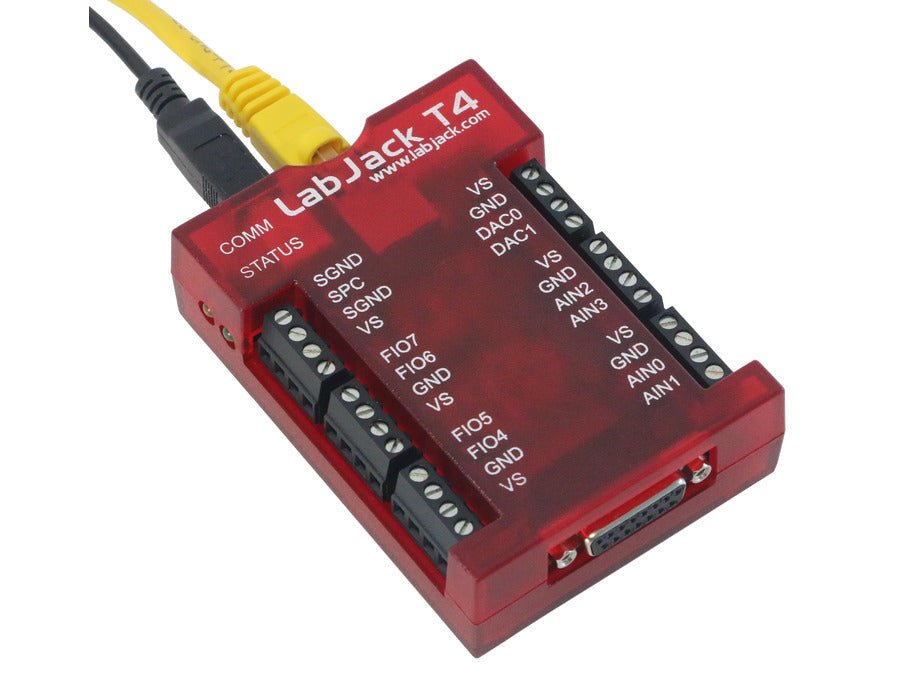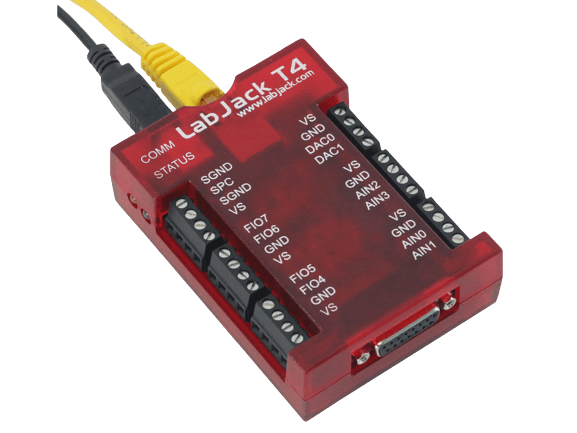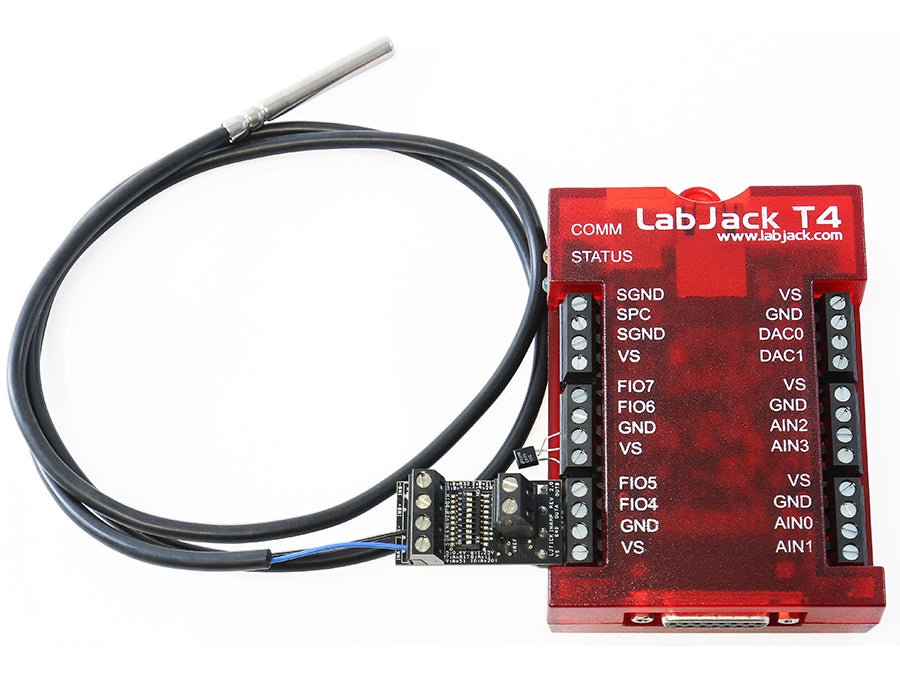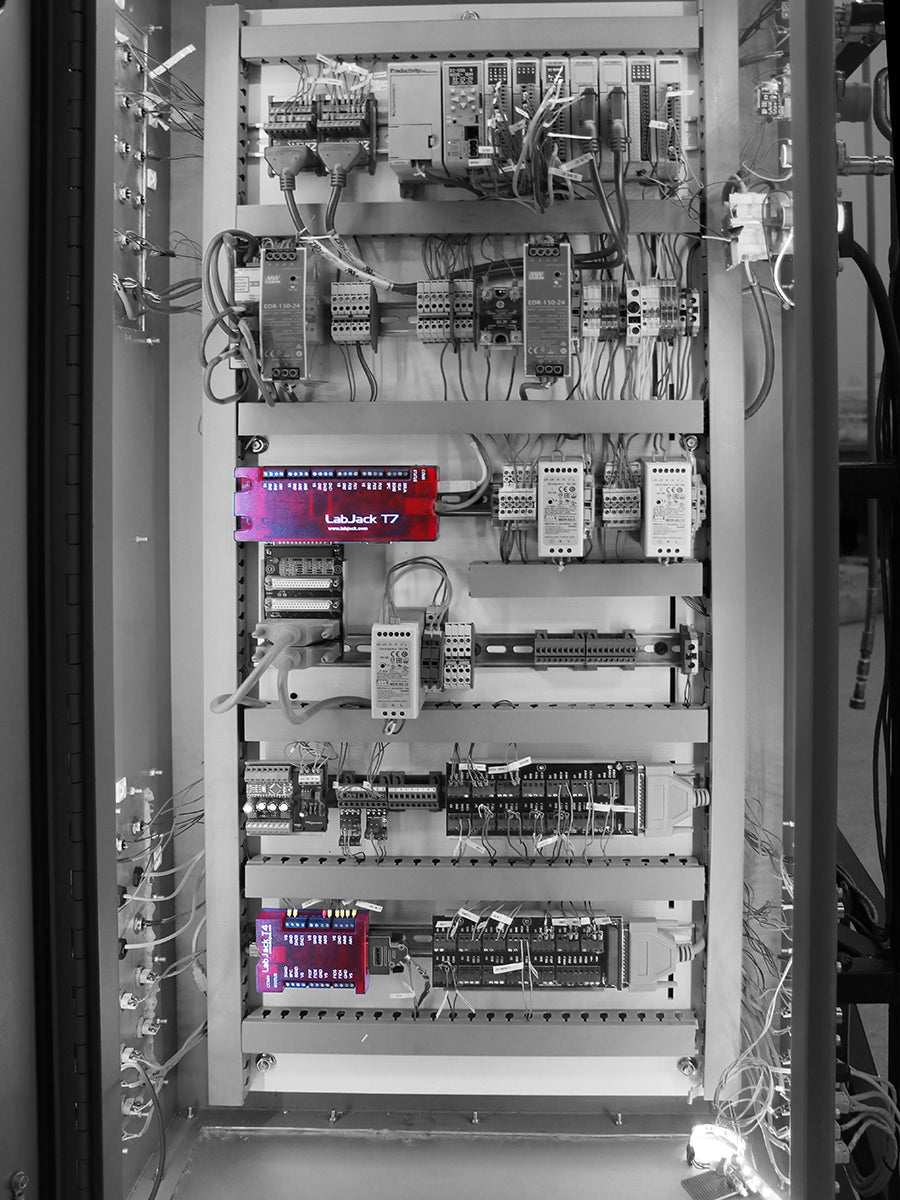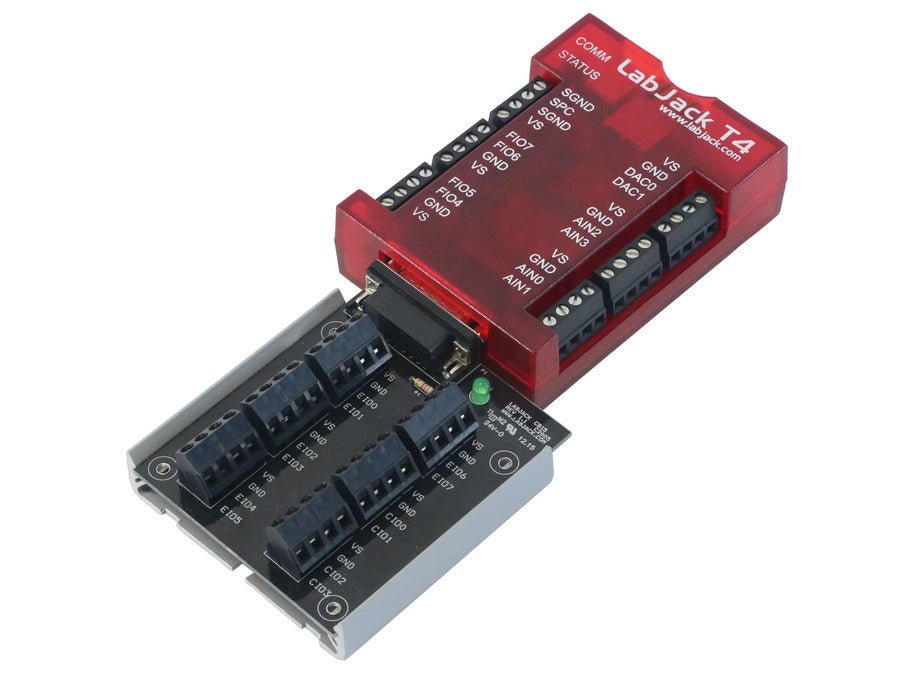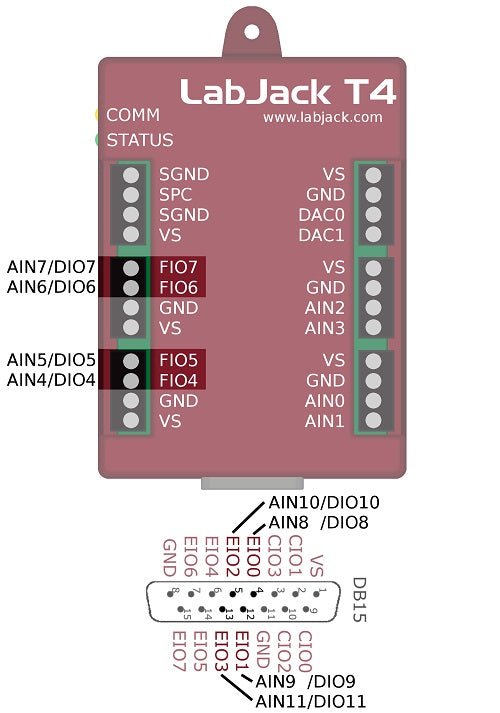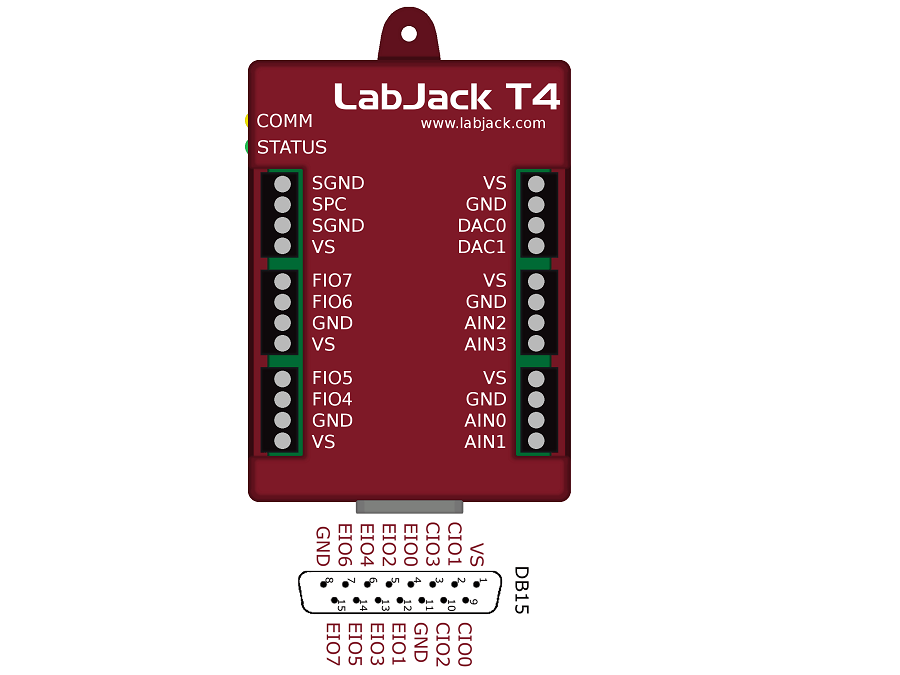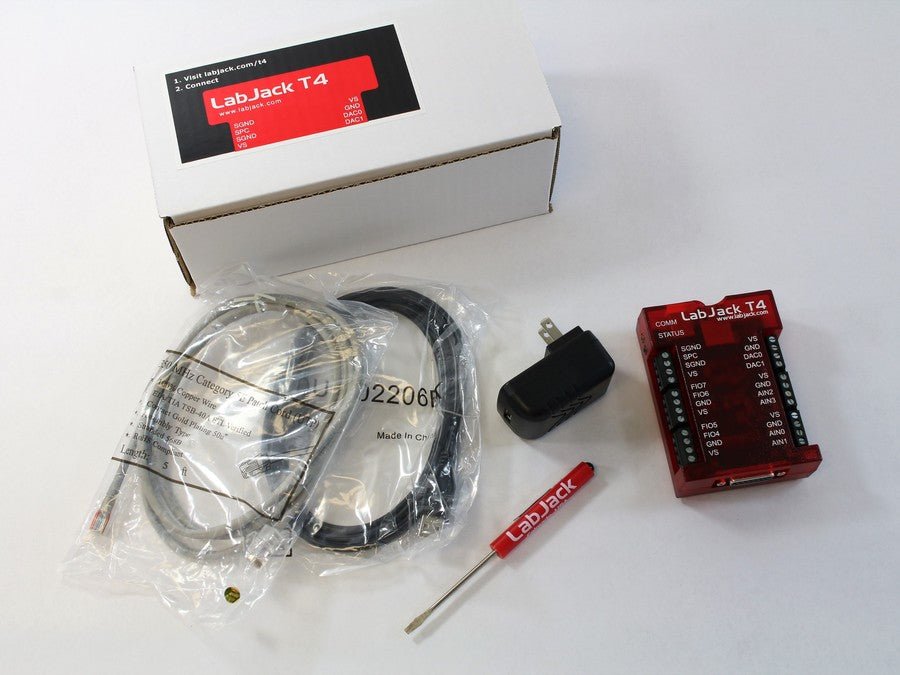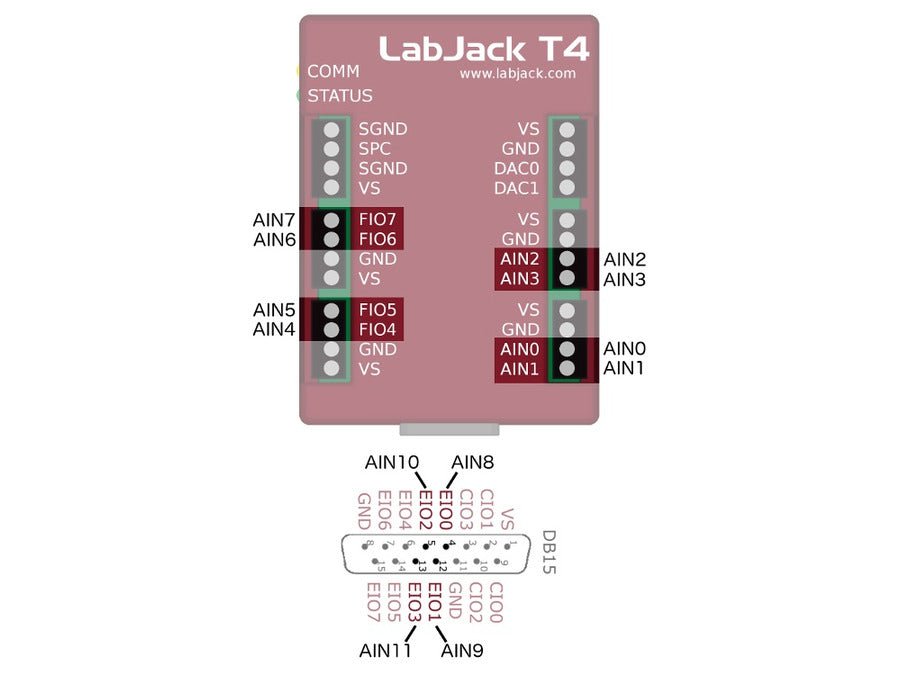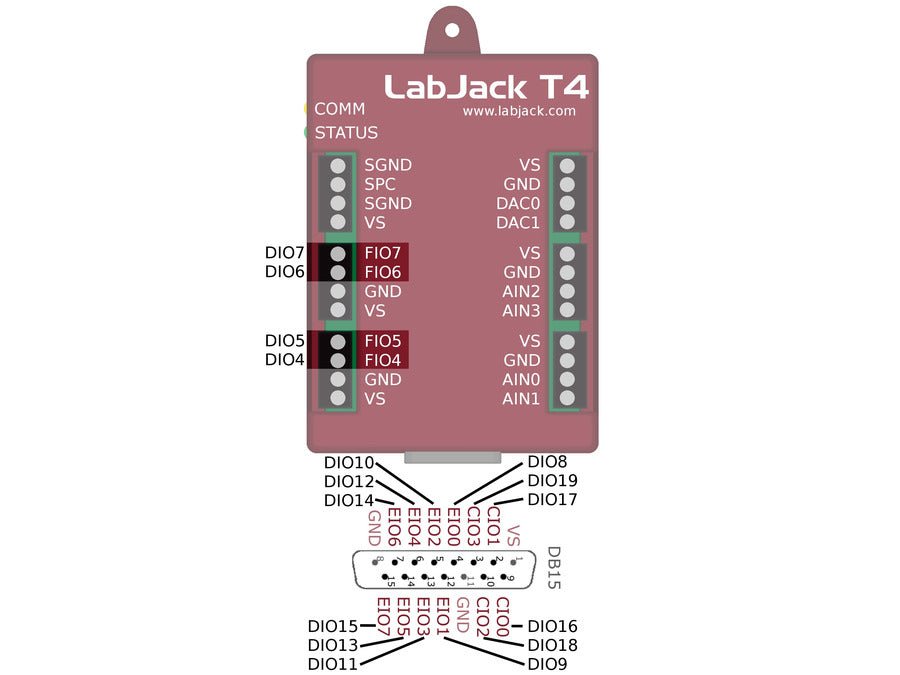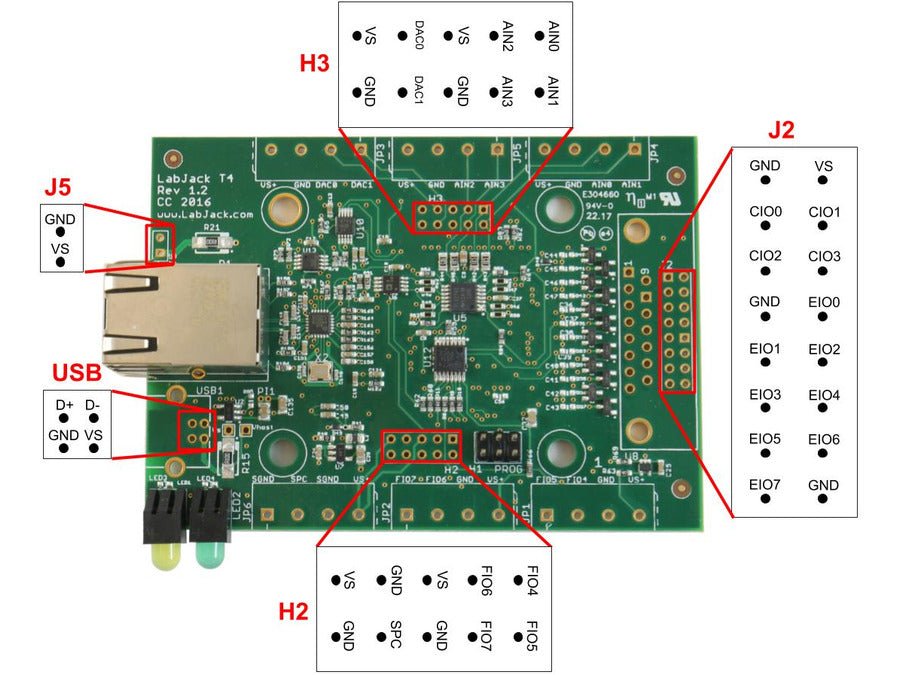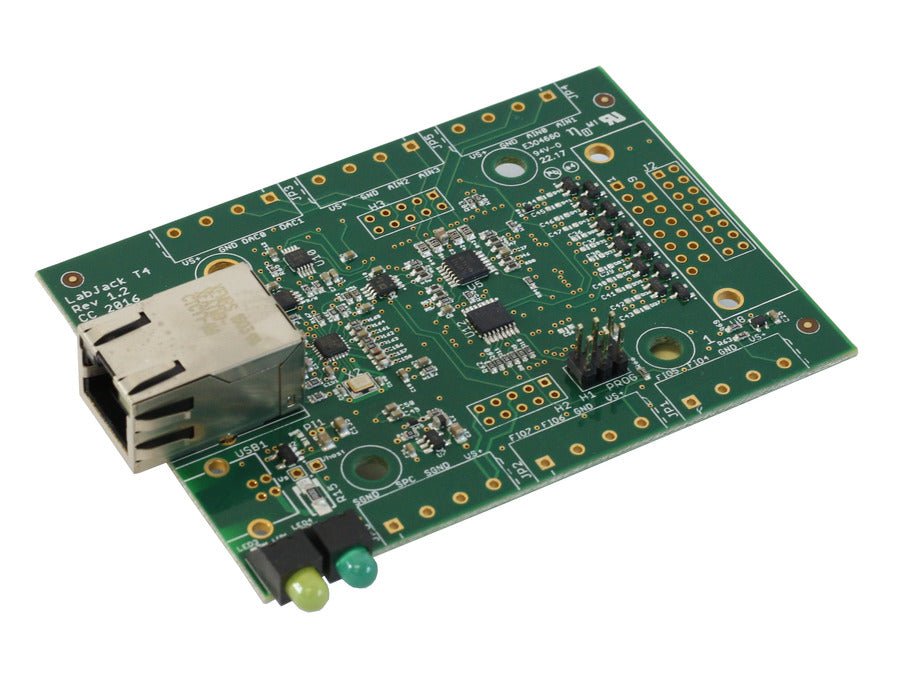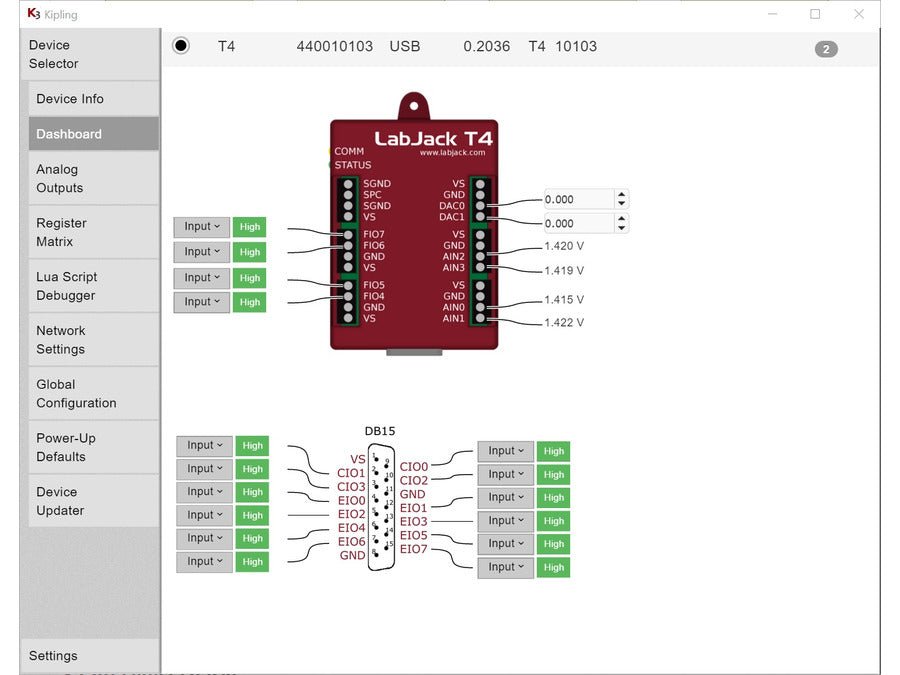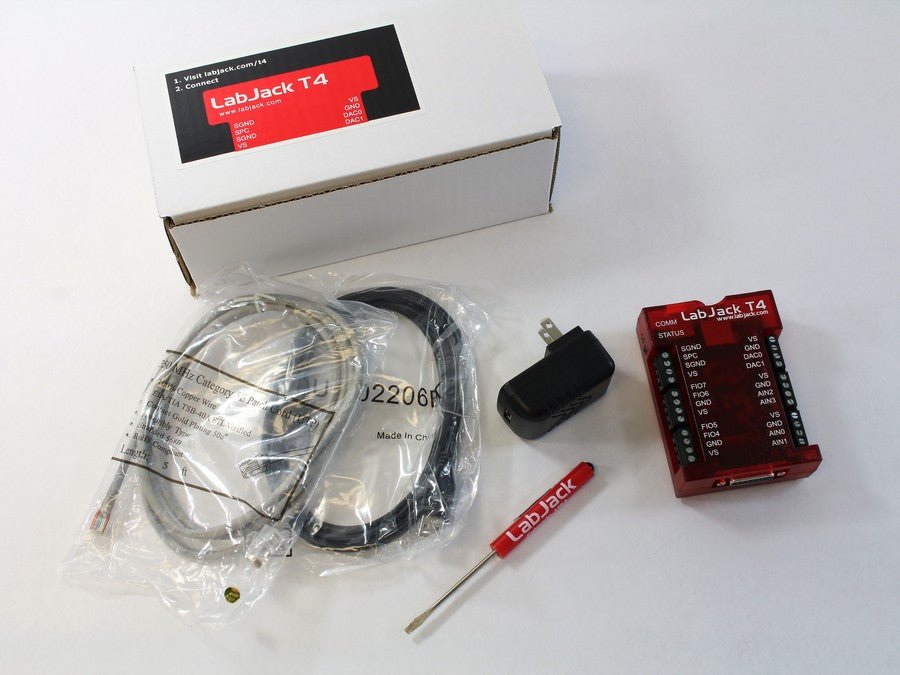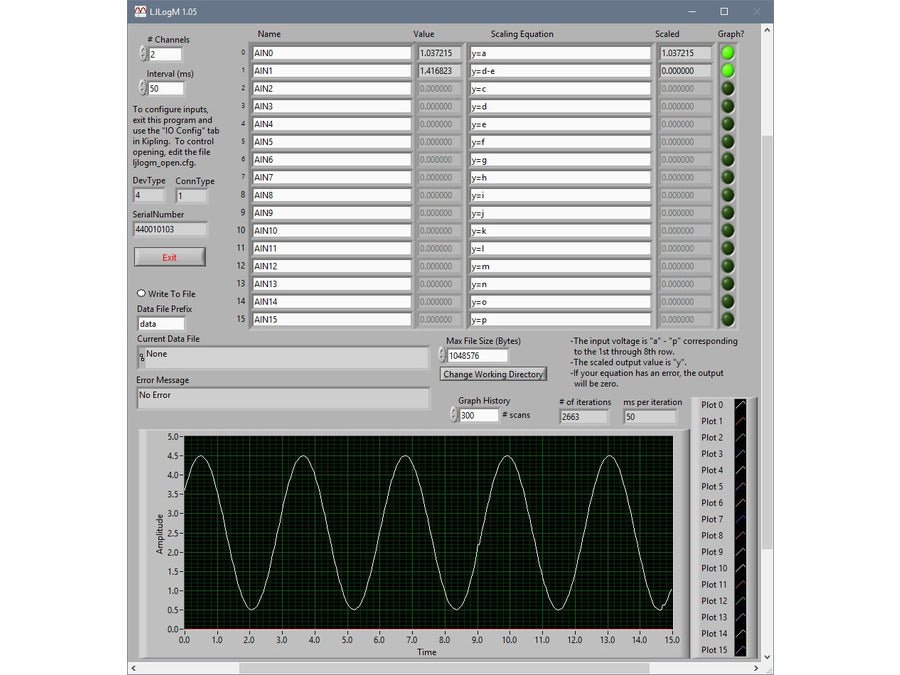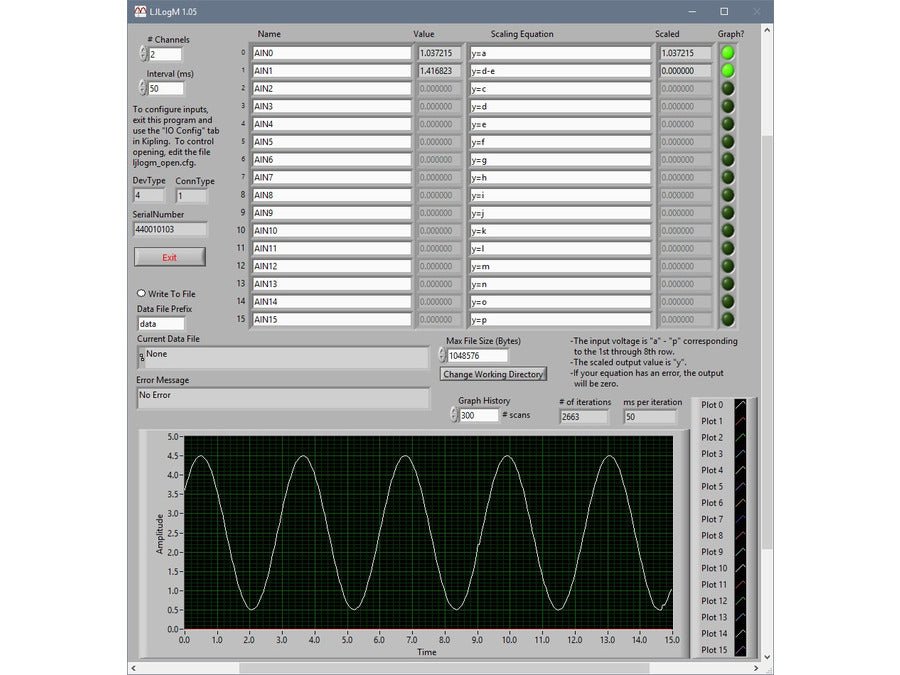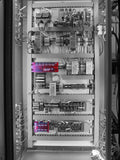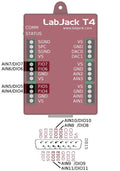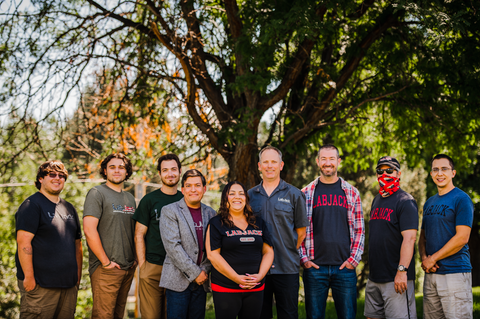U3 compared to U12
The U3 is newer than the U12, and in general is faster, more flexible, and less expensive.
The U3 is about half the size of the U12. The enclosure can be mounted using a couple screws or DIN rail, whereas the U12 enclosure has no mounting options.
Command/response functions on the U3 are typically 5-20 times faster than on the U12. See Section 3.1 of the U3 User's Guide compared to the U12 data rates page.
The U3 has up to 16 analog inputs compared to 8 on the U12. Any channel can be measured differentially versus any other channel. Accuracy specs are better than the U12.
The U3-LV has single-ended ranges of 0-2.4 or 0-3.6 volts, and a differential range of ±2.4 volts (pseudobipolar only). The U3-HV has 12 flexible I/O capable of those same low-voltage ranges, and 4 high-voltage analog inputs with a range of ±10 volts or -10/+20 volts. The U12 has a ±10 volt single-ended input range, and differential input ranges varying from ±20 volts to ±1 volt (all true bipolar). The circuitry used by the U12 to provide those high bipolar ranges is simple and inexpensive, but has drawbacks including relativity poor input impedance and errors which are different on every channel. There are many devices on the market now that have copied the same circuitry from the U12 and have the same drawbacks.
The U3 supports input streaming with a max rate of up to 50 ksamples/second, compared to 1.2 ksamples/second for the U12. The U3 achieves the full 12-bit resolution up to 2.5 ksamples/second, and then as speed increases the effective resolution drops to about 10 bits due to noise.
The U3 has 2 10-bit DACs as does the U12. The DACs on the U3 are derived from a regulated voltage, whereas the U12 DACs are derived from the power supply, so the U3 DACs will be more stable.
The digital I/O on the U3 use 3.3 volt logic, and are 5 volt tolerant. The U12 has 5 volt logic.
The U3 can have up to 2 timers and 2 counters. The timers have various functionality including period timing, duty cycle timing, quadrature input, pulse counting, or PWM output. The U12 has 1 counter and no timers.
The U3 has master support for SPI, I2C, and asynchronous serial protocols. The U12 does not support I2C, but does have some SPI and asynchronous support.
The U3 is supported on Windows, Linux and Mac OS X. The U12 has full support for Windows, limited support for Linux, and limited public support for the Mac.
On Windows, the U3 uses the flexible UD driver which also works with the U6 & UE9. There is a specific separate driver for the U12.
The U3 is compatible with the LJTick signal conditioning modules, whereas the U12 is not. Current ticks include:
-
LJTick-Divider (LJTD): Divides 2 single-ended higher voltage analog signals down to 0-2.5 volt signals. Install different resistors for different gain and offset.
-
LJTick-DAC (LJTDAC): Provides a pair of 14-bit analog outputs with a range of ±10 volts. Plugs into any digital I/O block, and thus up to 10 of these can be used per U3/UE9 to add 20 analog outputs.
-
LJTick-InAmp (LJTIA): Provides two instrumentation amplifiers ideal for low-level signals such as bridge circuits (e.g. strain gauges) and thermocouples. Each amplifier converts a differential input to single-ended.
-
LJTick-RelayDriver (LJTRD): Allows 2 digital I/O lines on a U3/UE9 to each control a relay or other moderate load up to 50V/200mA.
-
LJTick-CurrentShunt (LJTCS): Converts a 4-20 mA current loop input signal into a 0.47-2.36 volt signal.
-
LJTick-Proto (LJTP): Consists of an 8x8 grid of holes for prototyping custom signal-conditioning ticks.
... versus UE9: (EOL)
The UE9 has all the same improvements as the U3 above, with the following additions and differences:
The UE9 is about twice the size of the U3.
The biggest difference is that the UE9 supports Ethernet communication in addition to USB. Ethernet communication uses standard TCP or UDP protocol, and supports Modbus/TCP. Ethernet speeds in command/response or stream mode are generally similar to USB speeds (see Sections 3.1 and 3.2 of the User's Guide for more information). The addition of an 802.11 WiFi bridge allows for inexpensive wireless data acquisition and control.
When using Ethernet only (not USB), the UE9 has at least 500 volts of electrical isolation.
The UE9 has 14 analog inputs and 2 analog outputs. The analog inputs and outputs on the UE9 have better accuracy, resolution, and linearity. The analog inputs are single-ended only, but the LJTick-InAmp can be used for low-level differential signals.
Each analog input can be configured individually as unipolar (four ranges from 0-5 volts to 0-0.625 volts) or true bipolar (±5 volts). Analog input resolution is 12-bits at max speed (12 us conversion time), increasing up to 16-bits at slower speeds (2.7 ms conversion time).
Maximum input stream rates range from 250 samples/second at 16-bit resolution to 50+ ksamples/second at 12-bit resolution. The UE9 has a very large 4 Mbit buffer for stream data, compared to a very small buffer on the U3.
The UE9 has up to 6 timers available compared to 2 on the U3.
The UE9-Pro has all the features of the normal UE9 with the addition of an auxiliary low-speed hi-resolution (24-bit) sigma-delta ADC. This converter takes about 125 ms per sample and provides an effective resolution of about 20-bits (18-bits noise free) over the 0-5 or ±5 volt ranges. Linearity and accuracy are also improved compared to the normal converter (which is still available on the UE9-Pro).
... versus U6:
The U6 is similar to a UE9 without Ethernet, but the U6 is newer and has some analog input improvements. Some key details:
USB only.
Up to 4 timers available.
20 digital I/O (compared to 23 on the UE9).
The U6/U6-Pro analog inputs have higher resolution than the UE9/UE9-Pro in most cases.
Analog inputs are single-ended or differential, with input ranges of ±10, ±1, and ±0.1 volts.
2 Fixed Current Outputs (200/10 μA).
... versus T7:
The T7 is similar to a U6 and UE9, but the T7 combines the benefits of both devices, namely the high quality analog of the U6 with the advantages of Ethernet that you get from the UE9. The T7-Pro extends the advantages even further by adding WiFi.
Other improvements over the U6 and UE9 include:
Supported by our 3rd generation cross platform LJM library.
Straightforward low-level interface that uses Modbus TCP registers to access all device functionality.
Compatibility with most SCADA Modbus TCP enabled systems for both wired and wireless operation.
12 digital I/O lines can be configured for various timing/counting functionality, which we now refer to as DIO extended features. Read more in the DIO EF section of the T-series datasheet.
23 digital I/O, up from 20 on the U6.
The analog input extended feature system (AIN-EF) has the ability to do math and processing in hardware. Calculations for things like average, RMS, and thermocouples can be done on the device.
Write Lua scripts that run on the device with or without a host computer.
Improved slot-style screw mounts on the enclosure, which makes it possible to wall mount the T7 in any orientation, and still have the ability to quickly 'un-hook' it from the screws.
... versus T4:
The T4 is a blend of a U3-HV and T7. It has the form factor and I/O of the U3-HV, analog specifications very similar to the U3-HV (e.g. 12-bit analog inputs), but it has the processor of the T7 resulting in various changes compared to the U3:
- Like all T-series devices, the T4 has Ethernet in addition to USB.
- Add a standard WiFi bridge for inexpensive wireless data acquisition and control.
- Supported by our 3rd generation cross platform LJM library.
- Straightforward low-level interface that uses Modbus TCP registers to access all device functionality.
- Compatibility with most SCADA Modbus TCP enabled systems for both wired and wireless operation.
- 10 digital I/O lines can be configured for various timing/counting functionality, which we now refer to as DIO extended features. Read more in the DIO EF section of the T-series datasheet.
- The analog input extended feature system (AIN-EF) has the ability to do math and processing in hardware. Calculations for things like average and RMS can be done on the device.
- Write Lua scripts that run on the device with or without a host computer.
- The T4 has 4 single-ended analog inputs with +/-10V range, plus up to 8 digital I/O lines can be configured as single-ended analog inputs with 0-2.5V range. Similar but not exactly the same as the U3 AIN system.


